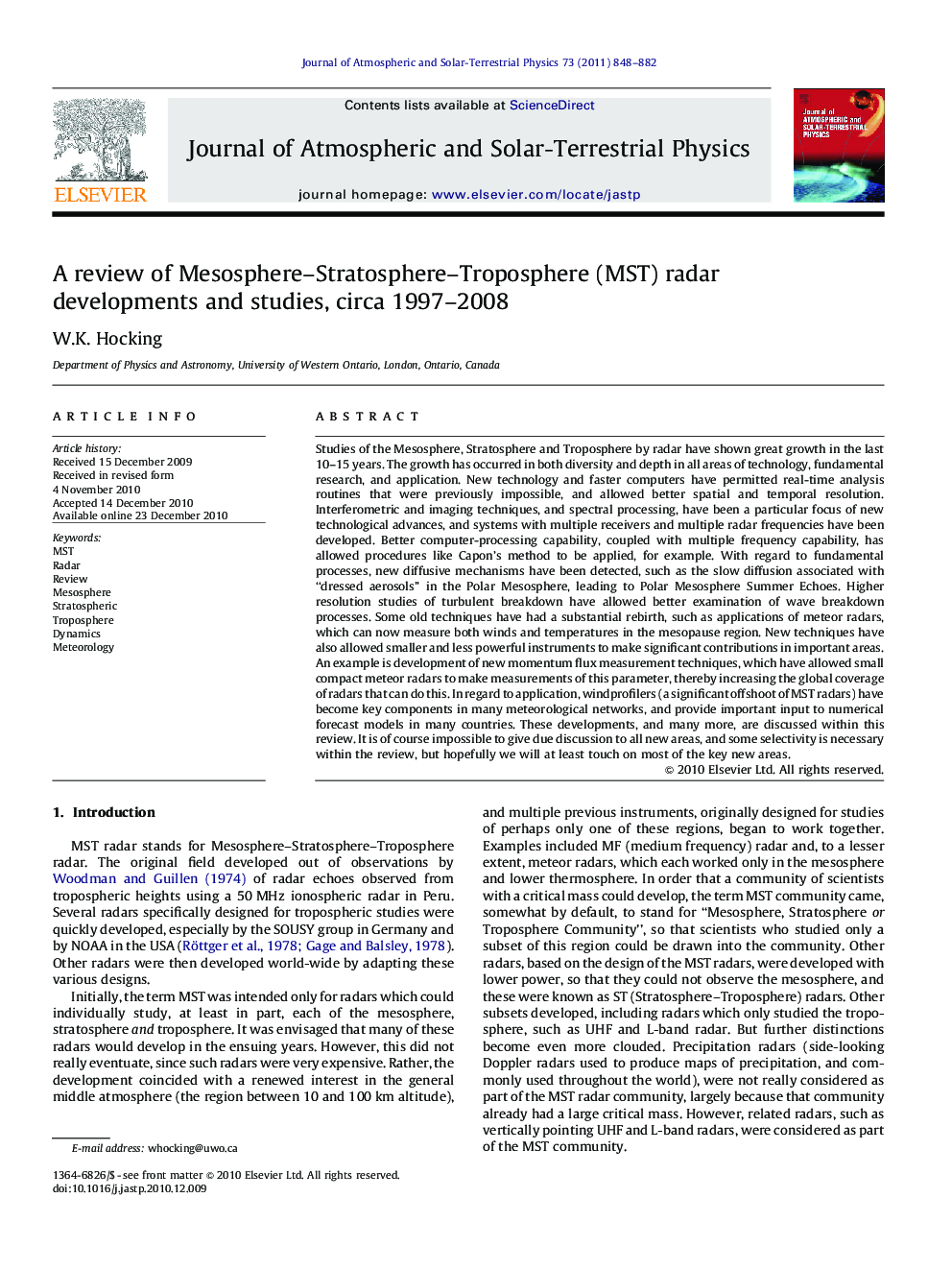| Article ID | Journal | Published Year | Pages | File Type |
|---|---|---|---|---|
| 1777204 | Journal of Atmospheric and Solar-Terrestrial Physics | 2011 | 35 Pages |
Studies of the Mesosphere, Stratosphere and Troposphere by radar have shown great growth in the last 10–15 years. The growth has occurred in both diversity and depth in all areas of technology, fundamental research, and application. New technology and faster computers have permitted real-time analysis routines that were previously impossible, and allowed better spatial and temporal resolution. Interferometric and imaging techniques, and spectral processing, have been a particular focus of new technological advances, and systems with multiple receivers and multiple radar frequencies have been developed. Better computer-processing capability, coupled with multiple frequency capability, has allowed procedures like Capon's method to be applied, for example. With regard to fundamental processes, new diffusive mechanisms have been detected, such as the slow diffusion associated with “dressed aerosols” in the Polar Mesosphere, leading to Polar Mesosphere Summer Echoes. Higher resolution studies of turbulent breakdown have allowed better examination of wave breakdown processes. Some old techniques have had a substantial rebirth, such as applications of meteor radars, which can now measure both winds and temperatures in the mesopause region. New techniques have also allowed smaller and less powerful instruments to make significant contributions in important areas. An example is development of new momentum flux measurement techniques, which have allowed small compact meteor radars to make measurements of this parameter, thereby increasing the global coverage of radars that can do this. In regard to application, windprofilers (a significant offshoot of MST radars) have become key components in many meteorological networks, and provide important input to numerical forecast models in many countries. These developments, and many more, are discussed within this review. It is of course impossible to give due discussion to all new areas, and some selectivity is necessary within the review, but hopefully we will at least touch on most of the key new areas.
Research highlights► Reviews MST radar scientific and technological developments over the period 1997–2008. ► Discusses single-instrument, networked, and multi-instrument studies. ► Emphasizes the relevance of advances to practical applications like weather-forecasting. ► Includes some commentary suggesting future research directions.
